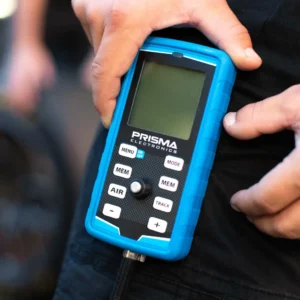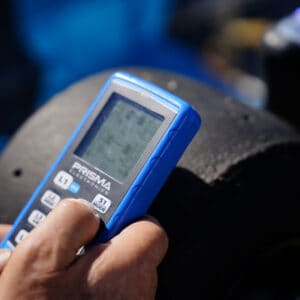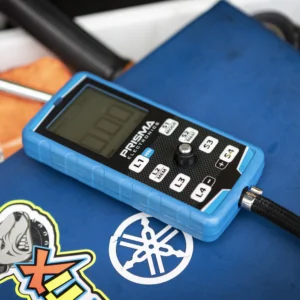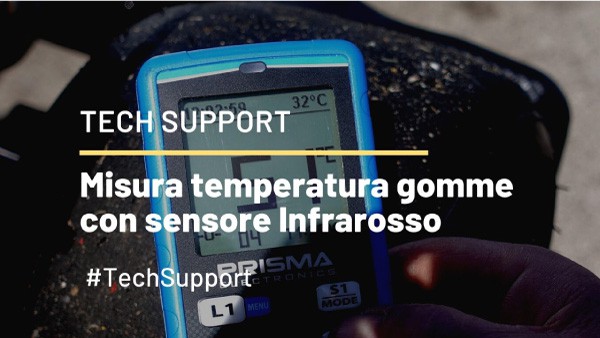
Measuring tire temperatures during motorsport races is a vital aspect of ensuring the optimal performance of tires. This is because the ideal mechanical grip of racing tires is only achievable within a specific temperature range, and it is imperative to maintain the tread within this range. Operating outside this range can lead to a significant decrease in tire performance. To measure tire temperatures, there are two main types of instruments used in motorsports. Non-contact temperature measurement pyrometer (infrared pyrometers) and Contact temperature measurement pyrometer (pyrometers with k-type needle probe).
Non-contact temperature measurement pyrometer
Non-contact temperature measurement includes infrared pyrometers, which measure the temperature from a distance.
Contact temperature measurement pyrometer
Contact temperature measurement pyrometer, on the other hand, includes tire pyrometers with needle probes, which measure temperature through direct contact with the tire.
Both solutions are precise in terms of accuracy; the only different thing is the way of measuring. With the needle probe pyrometer we can measure the temperature of the compound at specific points while with the infrared pyrometer, we can measure the surface temperature of the tread. Let’s now evaluate how to optimize the tread temperature measurement with the Infrared Pyrometer.
Infrared Pyrometer: All the advantages
This kind of instrument uses an electrical sensor that converts the infrared radiation emitted by a body having a certain temperature greater than 0K (-273 C) into an electrical signal.
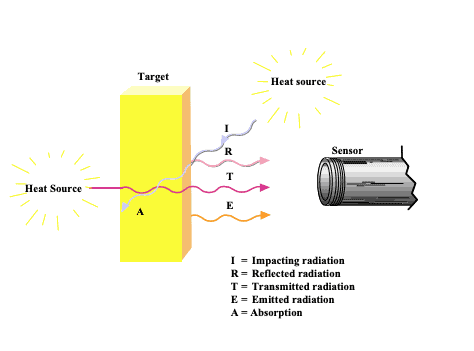
Infrared pyrometers are highly accurate and offer several advantages for measuring tire temperatures. They have a fast response time of 0.25 seconds, an accuracy of +/- 0.5 °C, and the ability to measure the average temperature of the entire tire tread. However, one of the main disadvantages is that they only measure the surface temperature of the tread and cannot measure the temperature of the compound as needle tire probes can.
Infrared Pyrometer: What is the FOV ?
One common question regarding the use of infrared pyrometers is the optimal distance between the instrument and the tire tread for accurate temperature measurement. The answer to this question is related to the FOV (Field Of View) parameter of the IR sensor. The FOV is the angle within which the sensor is sensitive to infrared radiation emitted by the object being measured. It is essential that the object being measured is entirely enclosed within the FOV, as the temperature measured will be the average of all objects within the FOV.
All models of Prisma Electronics digital tire pyrometer with infrared sensor have on the display the symbol of the spot from which the infrared radiates so as to easily understand the point where to measure.

What is the correct distance between the infrared pyrometer and the tire to be measured ?
The distance between the infrared pyrometer and the tread is directly related to the FOV. The graph shows how the surface hitting the tire increases (Spot) as the distance from the instrument increases. For instance, a distance of 25 mm between the tire tread and the pyrometer results in a spot size of +/-22mm, while a distance of 75 mm results in a spot size of +/-66mm. This feature provides greater flexibility in choosing the width of the tire surface to measure by adjusting the distance between the instrument and the tire.
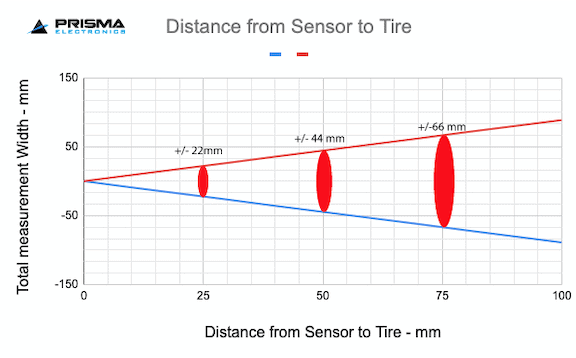
In motorsports, teams can optimize their tire management approach and ensure maximum tire performance by using the HPM4 + PYR2-IR + STW combo instrument, which can be used to measure tire pressure and temperatures simultaneously. By combining both instruments, teams can have a more comprehensive and effective approach to tire management during motorsport races.

Pascal Cardinale
author
